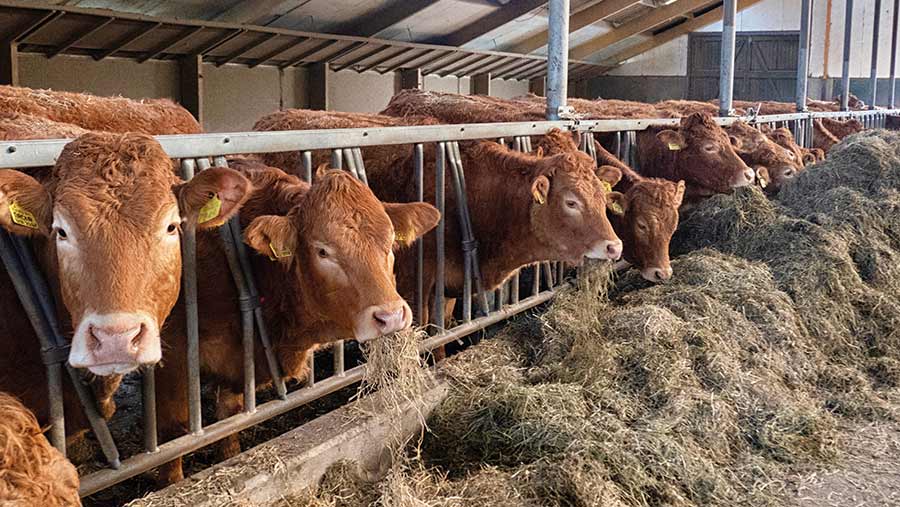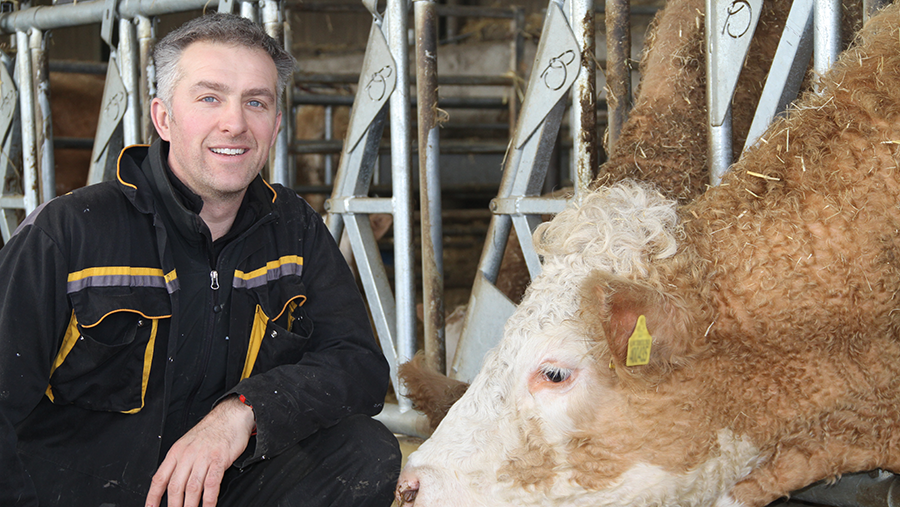Why recording sires could lead to better breeding outcomes
 © Patricia/Adobe Stock
© Patricia/Adobe Stock Millions of data points from abattoirs and farms are going to waste because farmers are opting not to record the sire on mandatory paperwork.
Industry leaders say this is a missed opportunity because in the era of “big data”, real-life commercial information on health and carcass traits can be fed back into the estimated breeding value (EBV) system if the sire of the progeny is known.
For each calf registered with the British Cattle Movement Service (BCMS) or ScotEID, information about the dam is legally required, but the form can be completed without adding the sire’s details.
See also: BCMS data mined for three maternal beef EBVs
Carcass traits wasted
Professor of livestock breeding at Scotland’s Rural College, Mike Coffey, says it is “a real shame” more than six million carcass traits have been wasted since 2010.
However, he stresses the number of calves with their sire registered on BCMS has lifted from 20% of calves a few years ago to about 30% today.
AHDB’s #ShoutabouttheSire campaign was started in 2019 to help raise awareness of the benefits of recording sires.
Prof Coffey says some data points can be saved by cross-referencing with other records.
“In the dairy industry, some can be saved by looking at milk-recording data and insemination information and using that to salvage [sire] records for some calves in BCMS,” he says.
“This is critical for a trait like TB resilience, where we absolutely must have the sire [recorded] on there.”
He says valuable phenotypes (visible traits seen on-farm) are now being captured from the BCMS database to produce more accurate and commercially proven traits (see “Why record the sire?”).
“Many countries – Canada and the US included – do not have what we have,” adds Prof Coffey. “BCMS is a massive potential resource.”
He suspects the value to cattle breeders of traits will increase over time. “Fairly straightforward traits like milk, fat and protein in dairying have been done, as have carcass traits in beef animals.
“What we now need are the hard things like health traits to breed cattle for disease resilience, antimicrobial resistance, better feed efficiency and lower methane emissions.”
He says health data points can be expensive to gather directly, so using “big data” to get the use of free phenotypes is an easy win for the whole industry.
He likens the act of sire recording to recycling. “We all do it, we don’t see the immediate benefit, but we all win long-term.”
Why record the sire?
- It allows geneticists to use the British Cattle Movement Service (BCMS) as a pedigree source alongside abattoir data to produce maternal and terminal traits in the national beef evaluations (see below)
- Sires on passports give access to premium schemes
- It further improves cattle traceability and industry reputation
BCMS data mining yields new traits
Three maternal traits have been produced from real-life commercial data to assist beef breeders in improving efficiency and profit.
AHDB now publishes the new traits in the National Beef Evaluation (NBE) online.
They are:
- Age at first calving: Birth date and first calf birth date recorded on the British Cattle Movement Service (BCMS)
- Productive lifespan: The number of parities up until six-and-a-half years old or death
- Calf survival: Based on whether a calf is dead or alive at 10 months, using BCMS records.
The new traits will run alongside Signet data and complement Breedplan figures, with a link through to the animal’s results. Limousin breeders can access this through Taurus.
This adds to the genetic evaluation drawn from commercial carcass traits in beef cattle using abattoir data from processors.
The five commercial carcass traits are: days to slaughter, carcass weight, carcass conformation, carcass fat class and average daily carcass gain.
Low heritability
Alex Brown, senior beef breeding and genetics manager at AHDB, says the heritability of the maternal traits is low, but still has a genetic component.
“Calf survival, productive lifespan and age at first calving are about 4%, 6%, and 11% heritable respectively, so much lower than some carcass traits, which can be 40-odd percent,” she says.
“And, while management affects these maternal traits hugely, there is a genetic component, and once this is bred for, it is permanent – it is in the bank.”
What about the bull?
Neil Shand, chief executive officer of the National Beef Association, has welcomed the new data, but cautions farmers that BCMS data is just one side of the story.
“The other side is the bull,” says Mr Shand. “One concern in the beef sector is that the cow gets a lot of blame for stuff that really isn’t her fault. How much can be down to bull infertility?
“Each year there are about 250,000 cows that do not rear a calf – some will undoubtedly be due to bulls not working.”
However, he stresses that calf survival and age at first calving are “massive” data points for the industry and very valuable key performance indicators.
Case study: Sire recording is a no brainer for everyone

© James Shouler
Farm facts: Elm Tree Farm, Oxfordshire
- 55 pedigree Simmental cows – Alchester herd
- 141ha (350 acres) of which 42ha (104 acres) is forage ground
- Arable rented out to family to grow cereals
- Heifers bulled for six weeks
- Autumn-calving herd using artificial insemination
Pedigree breeder and mixed farmer James Shouler of Bicester, Oxfordshire, has been recording the sire of his calves at Elm Tree Farm for 20 years.
He admits that because he is in the market to sell bulls, commercial data and performance recording is directly and immediately of use to him.
However, he stresses that everybody should be able to register most of their calves correctly, accounting for some changeover in the bulling period if a sweeper bull is used.
“I think some people in the industry are naïve as to what that data can produce in terms of helping with bull selection and improving the accuracy of breeding values.
Putting the sire on the passport is helping the industry in general, even if you don’t see it yourself immediately.”
Sire recording
The autumn-calving Alchester herd has used artificial insemination for several years.
A Canadian bull called PHS Polled Worldwide 14W has been imported to further moderate cow size, improve fleshing, foraging ability, calving ease and gestation length.
Heat detection collars are used to produce a tight calving period of less than 12 weeks.
A decision to breed functional, maternal traits and produce more live calves each year – at a potential cost of 20-30kg of carcass weight – has so far paid off for Mr Shouler, who is assisting far fewer calves and can now calve outside.
He tags calves in the field and uses the Breedr app to update his calving records.
Pedigree registration is simplified by the herd management software, which automatically applies for the passport when the calf is born and registered on the system.
